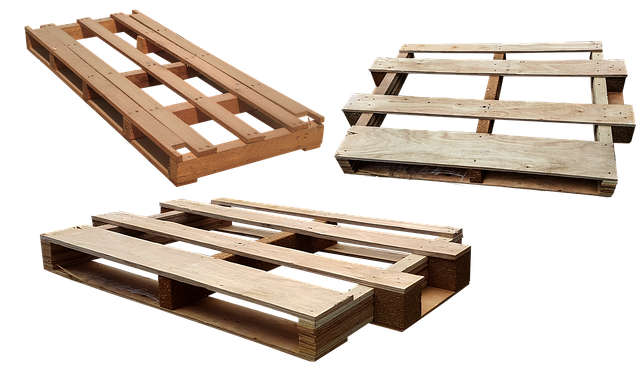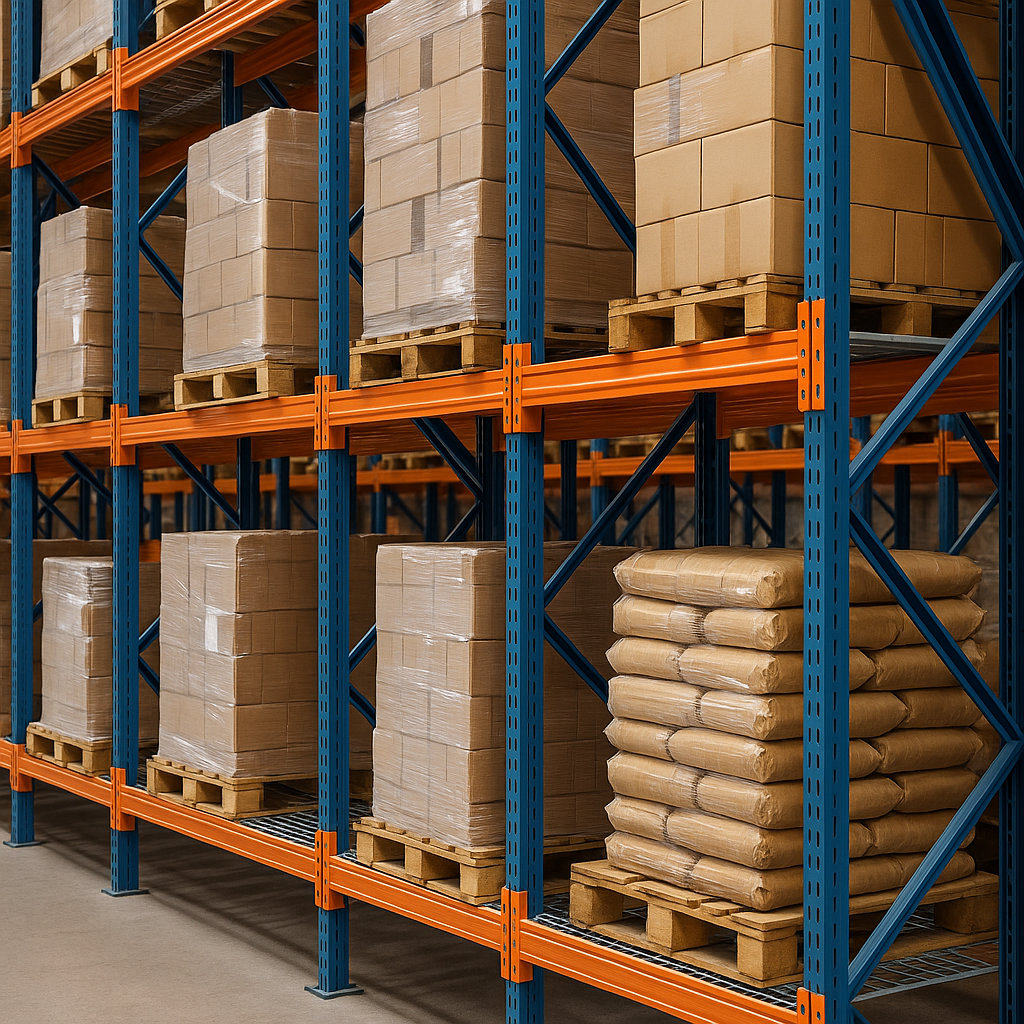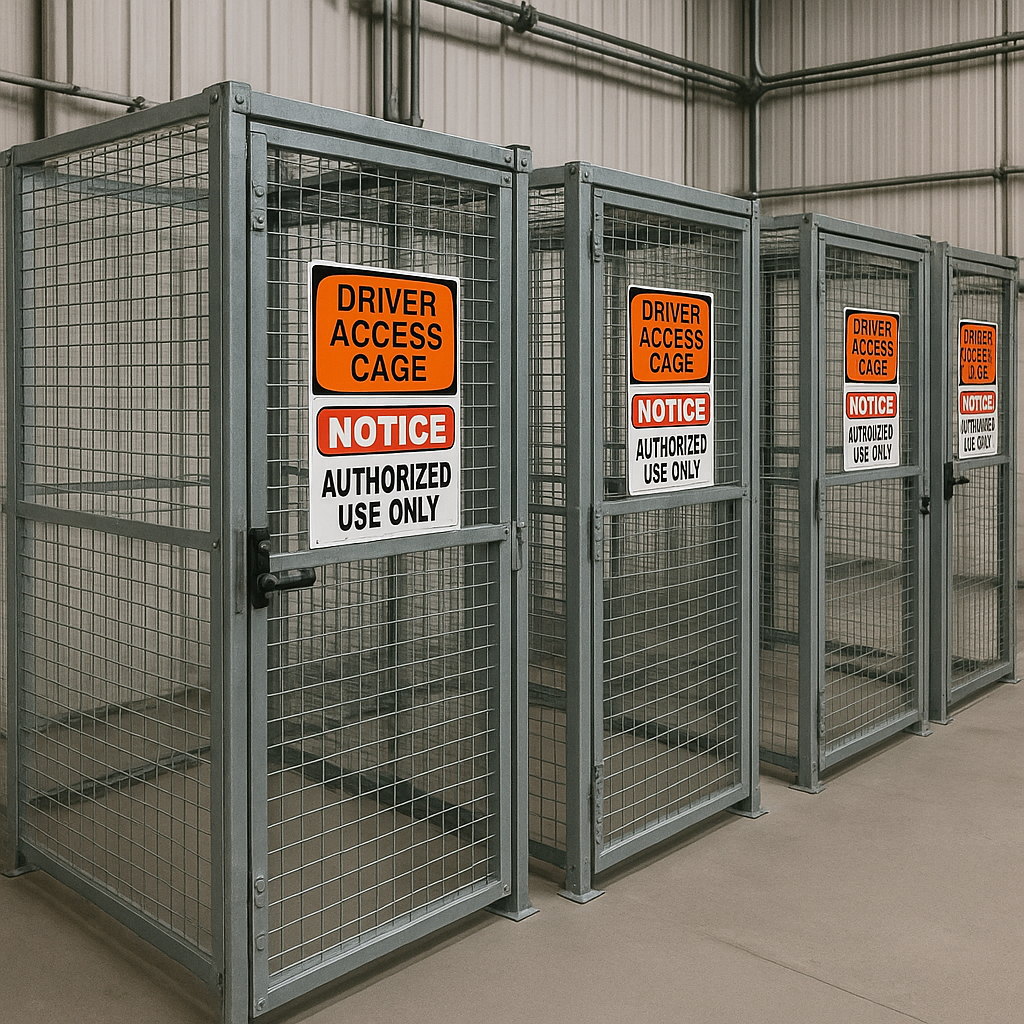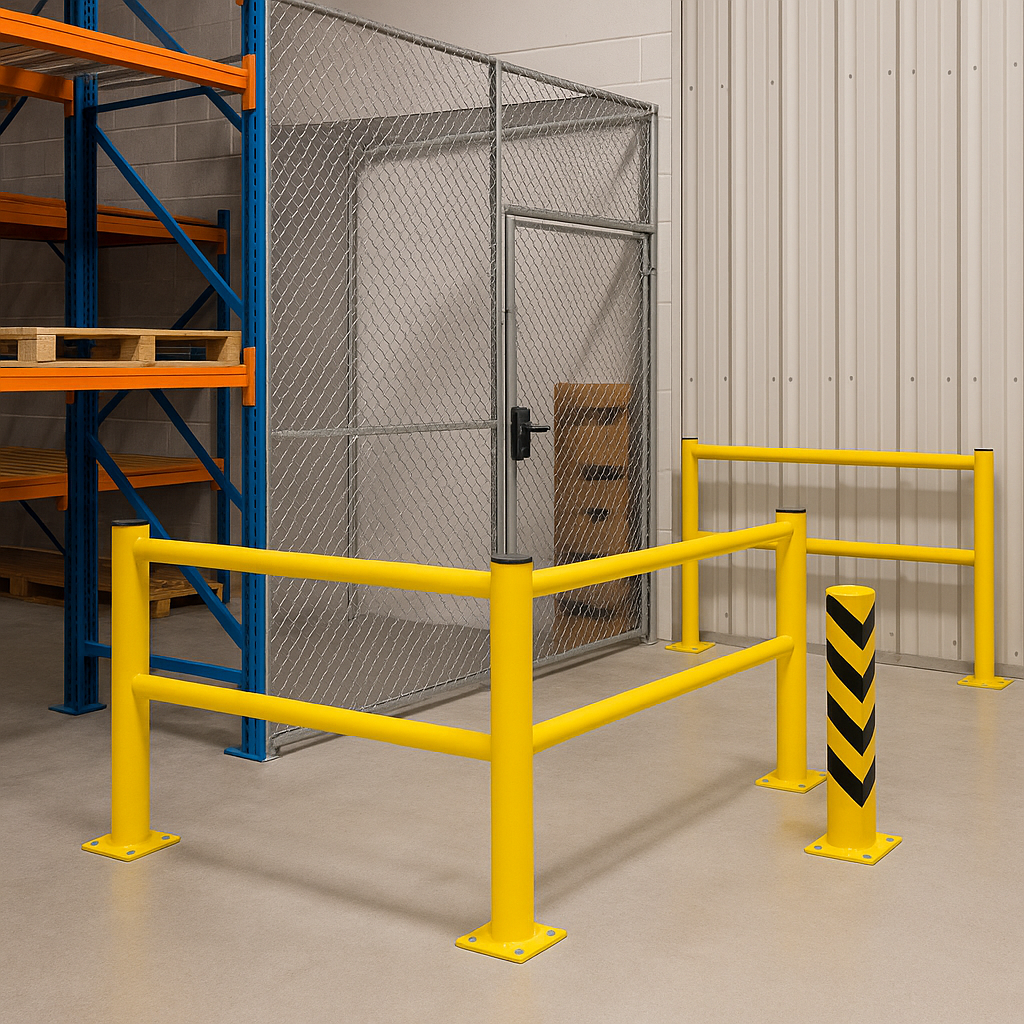
In the logistics and warehousing industries, pallets are critical tools that enable the efficient transport and storage of goods. Pallets are designed to hold and move heavy loads, but understanding how much weight a pallet can hold requires a deeper look into the pallet design system, the materials used, and their role in the broader supply chain.
In this blog, we will explore the various factors that determine the weight a pallet can support, from static load capacity to the different types of pallets and their applications in pallet racking systems.
Types of Pallets and Their Construction

Pallets come in various types and are constructed from different materials such as wood, plastic, and metal. The weight capacity of a pallet is greatly influenced by the type of material used and the pallet’s design. Let’s take a closer look at the most commonly used pallets in the industry:
Wooden Pallets: These are the most widely used pallets, especially in industries adhering to GMA standards (Grocery Manufacturers Association). The standard wooden pallet measures 48” x 40” and can typically support up to 2,500 lbs when evenly distributed. Wood pallets can vary in strength depending on the type of wood used, the moisture content, and the quality of construction.
Plastic Pallets: Known for their durability, plastic pallets are becoming more popular due to their ability to resist environmental conditions like moisture and extreme temperatures. A plastic pallet can hold anywhere from 1,500 to 5,500 lbs, and they are especially useful in industries that require clean, easily sanitized pallets, such as food and pharmaceuticals.
Metal Pallets: While less common, metal pallets are used for heavy-duty applications where extreme durability and high weight capacities are required. These pallets can support 5,500 lbs or more, making them ideal for transporting particularly heavy goods.
In terms of design, block pallets and stringer pallets are the most frequently used. Block pallets are considered stronger and more versatile as they are typically four-way pallets, meaning they can be lifted from all sides using forklifts or pallet jacks. Stringer pallets, on the other hand, are typically two-way pallets, though some can be modified for four-way access.
What Factors Affect a Pallet’s Weight Capacity?

The weight capacity of a pallet depends on several factors, which must be carefully considered to ensure safe loading and handling:
Material Quality: Whether the pallet is made from wood, plastic, or metal, the quality of the material has a direct impact on how much weight a pallet can hold. Higher-grade wood or reinforced plastic will generally provide greater strength and durability.
Pallet Design: Pallet designs like block pallets generally support more weight due to their solid construction, while stringer pallets may have a lower load capacity depending on their construction. Pallets with additional support beams or wire decking are also better suited for heavier loads.
Load Distribution: The maximum weight a pallet can support is determined by how evenly the load is distributed across the pallet. Uneven loads can result in pallet failure or pallet breaks, leading to accidents or damaged goods.
Environmental Conditions: Factors such as moisture, temperature, and exposure to chemicals can weaken a pallet, particularly wooden pallets, which are sensitive to moisture content. Plastic pallets are more resistant to environmental factors, making them a good choice for wet or cold environments.
Static Load Capacity vs. Dynamic Load Capacity: Pallets have different capacities depending on whether they are stationary or in motion. Static load capacity refers to the weight a pallet can hold when it is stationary, while dynamic load capacity is the weight a pallet can bear while being moved by a forklift or pallet jack. Additionally, rack capacity is the weight a pallet can hold when stored on a pallet racking system, where the load is concentrated on the edges.
How Much Weight Can Different Pallets Hold?

The weight limits of pallets vary based on their material and construction:
Wooden Pallets: These traditional pallets typically support 2,000 to 3,000 lbs under normal conditions. The standard GMA pallet, widely used in North America, can hold approximately 2,500 lbs of evenly distributed weight. However, custom-made wooden pallets with additional support beams can support heavier loads.
Plastic Pallets: As previously mentioned, plastic pallets offer higher weight capacities, with some able to support up to 5,500 lbs. These pallets are highly durable and resistant to environmental damage, making them ideal for industries with stringent hygiene requirements.
Metal Pallets: Metal pallets have the highest weight capacity, often exceeding 5,500 lbs, making them suitable for transporting heavy machinery, large quantities of goods, or products that require extra security during transport.
Overloading and Its Consequences

When pallets are overloaded, they can fail, leading to a host of problems such as damaged goods, worker injuries, and pallet failure. Overloaded pallets can buckle under the excessive weight, especially if the load is not properly balanced. It’s crucial to respect the maximum load limits and ensure that pallets are loaded within their specified weight capacity.
Pallets must also be stacked properly when shipped to avoid pallet breaks or toppling. Improper stacking or overloading can also reduce a pallet’s rack capacity, making it more likely to collapse when stored on pallet racking systems.
How to Safely Load and Transport Pallets

To ensure that pallets are loaded and transported safely, follow these best practices:
Know Your Load Capacity: Before loading a pallet, always check its static load capacity and dynamic load capacity. Be mindful of how the pallet will be handled (by forklifts or pallet jacks) and stored (on racks or the floor).
Evenly Distribute Weight: Ensure that the weight is spread evenly across the pallet to prevent uneven loads, which can cause tipping or breakage. The dimensions of the materials being shipped should also be considered when loading.
Inspect Pallets Regularly: Regular inspections for wear and tear are crucial, especially for wooden pallets. Pallet failure often occurs due to unnoticed cracks, splits, or damage from previous loads.
Use the Right Pallet for the Job: Whether you’re dealing with a standard pallet or a custom-sized one, it’s important to choose the correct pallet types for your specific application. For example, if your pallets will be loaded and unloaded frequently, using plastic pallets or block pallets designed for heavy-duty use will increase the longevity of the pallet and reduce the risk of accidents.
Conclusion
Understanding how much weight a pallet can hold is essential to ensuring safety and efficiency in warehouse operations. Whether you are working with wood pallets, plastic pallets, or metal pallets, knowing the maximum weight they can support, and how to properly distribute loads, can significantly reduce the risk of damage or accidents. At WT Hight, we provide expert advice and custom solutions for all your material handling needs, ensuring that your pallets and pallet racking systems are up to the task.








